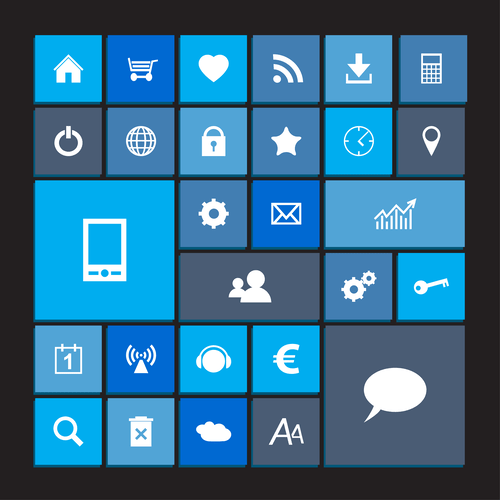Both fog computing and cloud computing aim to deal with these requirements, albeit in different ways. Both fog and edge computing scale to satisfy the wants of large and sophisticated methods. They present further compute resources and companies to edge units, which permits organizations to course of more information in real-time.
- Cloud computing relies on centralized knowledge facilities, usually situated in distant areas, serving a variety of purchasers over the web.
- On one hand, cloud computing is very dependent on having a powerful and dependable core community.
- The fog layer supplies extra safety measures to edge devices, corresponding to encryption and authentication.
- Cloud computing tends to work finest in massive, centralized data centers or servers the place companies are delivered virtually with none bodily interaction.
- Fog computing is more environment friendly because data is processed nearer to the supply, which reduces latency.
- 5G knowledge speeds are set to reach in Europe over the next few years, with obtain speeds of as much as 10Gbps.
However, a key problem in cloud computing is dealing with community latency and excessive bandwidth utilization, particularly while processing information remotely. Remember, the goal is to have the ability to course of information in a matter of milliseconds. An IoT sensor on a factory flooring, for example, can likely use a wired connection. However, a cell useful resource, corresponding to an autonomous automobile, or an isolated useful resource, similar to a wind turbine in the course of a subject, will require an alternate type of connectivity. 5G is an especially compelling possibility because it provides the high-speed connectivity that’s required for information to be analyzed in near-real time.
Fog Computing Vs Cloud Computing For Iot Initiatives
Fog computing is a term for technology that extends cloud computing and services to the edge of an enterprise’s network. It allows knowledge, applications, and different assets to be moved closer to, or even on top of, finish users. Most people do not perceive the difference between fog computing vs. cloud computing.

Cloud computing is the on-demand provision of laptop processing energy, data storage, and purposes out there over the internet. Fog offers three completely different cloud infrastructure fashions, together with Platform as a Service (PaaS), Infrastructure as a Service (IaaS), and Software as a Service (SaaS). Fog computing offers centralised user management assist, and cloud management can both be centralised or delegated to a third celebration. In distinction to cloud computing, where resource administration may be unfold or centralized, fog computing centralizes it. Fog computing is geographically distributed and operates in shut proximity to the data sources and end-users. Fog nodes are situated at the community edge, such as IoT gateways, routers, or on-site servers, enabling local processing and immediate response.
What’s The Difference Between Fog Computing And Cloud Computing?
The centralized nature of a cloud system leads to high latency, while fog techniques experience low latency due to their decentralized nature. These gadgets have the potential to perform https://www.globalcloudteam.com/ both networking and computational operations simultaneously. Fog and cloud are some of the two methods which have turn into all too common.
Heavy.AI additionally offers a fog computing solution that can be utilized to handle and course of knowledge from IoT devices on the fringe of the community. This solution can improve the efficiency of IoT functions by reducing latency and guaranteeing data is processed domestically. Edge computing, a distributed computing model, processes data and applications at the edge of the network, near the info supply. By distinction, within the conventional centralized mannequin of cloud computing, data and purposes are stored in a central location and accessed over the community. For fog, processing and storage happen at the network’s edge, nearer to the knowledge supply, enhancing real-time control. While fog gadgets are resource-constrained compared to cloud servers, their decentralized nature and geological unfold enhance service reliability, masking vast areas.
This is finished by exposing a uniform and programmable interface to the other elements in the system. Some processors are clever sufficient to fill the information based mostly on historic knowledge if a number of sensors fail. The temperature recording could be pushed to the cloud every second with a service checking for fluctuations. But a more intelligent means of storing this data can be to check if there have been any temperature modifications in the earlier couple of seconds. When a temperature change is observed, the info is pushed to the cloud for storage to confirm the correct operation of the production line.
Fog networks rely on a decentralized approach, with techniques on the network’s edge, such as sensors or gadgets, storing and processing knowledge. Only in cloud computing, it’s possible to combine multiple data sources, together with the system and the cloud computing information supply. Cloud fails without an internet connection, whereas Fog succeeds even without one as a result of it follows many procedures and guidelines. A layer of fog lies between a cloud and digital tools like a pc, laptop, or phone. Without a layer, a cloud must interface and work together with end units directly, which takes longer than utilizing fog computing.
Since fog elements take up a number of the SLA commitments of the cloud, excessive availability is a must. The useful resource supervisor works with the monitor to determine when and the place the demand is high. No matter the trade vertical, today’s enterprises see an outpouring of knowledge from consumers. The web of things (IoT) drives data-intensive buyer experiences involving anything fog vs cloud computing from sensible electric grids to health trackers. Cloud computing and artificial intelligence allow for the dynamic processing and storage of these giant amounts of knowledge. This data permits organizations to make informed selections and protect themselves from vulnerabilities at each, business and technological levels.

By using cloud computing companies and paying for what we use, we will avoid the complexity of owning and maintaining infrastructure. It must be famous, however, that some network engineers consider fog computing to be merely a Cisco brand for one method to edge computing. We’ve already got used to the technical term cloud, which is a community of multiple gadgets, computers and servers related to each other over the Internet. Fog computing is designed to work with a variety of gadgets, including sensors, cameras, and different IoT gadgets.
Apply Entry Control At The Fog Node Layer
This article goals to compare Fog vs. Cloud and tell you extra about Fog vs. cloud computing prospects and their professionals and cons. In 2015, Cisco partnered with Microsoft, Dell, Intel, Arm and Princeton University to type the OpenFog Consortium. Other organizations, together with General Electric (GE), Foxconn and Hitachi, additionally contributed to this consortium. [newline]The consortium’s primary objectives have been to each promote and standardize fog computing.
The temperature may take up little space, however this sort of situation can be common with gadgets similar to CCTV cameras that produce giant video and audio knowledge. It frees up bandwidth, as you can email a hyperlink to recipients instead of emailing the file itself (which may be large by means of size). And it additionally allows staff to work from anywhere, as the files are all the time accessible from any internet-connected system. Edge, fog, and cloud are crucial computing frameworks that can empower companies to thrive in today’s superior technological ecosystem. Fog has a decentralized architecture with hundreds of thousands of small nodes that together comprise the whole network being as close as potential to the client hardware.
How And Why Is Fog Computing Used?
At a primary degree, cloud computing and fog computing are comparable in that they each contain the remote use of computing power and assets. However, in phrases of capability, there are some necessary variations between the 2 approaches. In common, cloud computing is better suited to duties that require giant amounts of processing power, such as big data analytics and complicated modeling. The most vital difference between cloud computing and fog computing is their location. Edge computing and fog computing are two concepts which are often used interchangeably, however they’ve important variations. Edge computing is a decentralized computing model that brings knowledge processing nearer to the devices and sensors that generate it.
In the sphere of smart cities, fog computing is utilized in visitors management systems. By deploying edge servers at intersections, real-time visitors information may be processed domestically, reducing latency and enabling efficient site visitors management. In contrast, cloud computing is utilized in functions like energy management, the place massive amounts of knowledge from smart meters are analyzed in the cloud to optimize power consumption. Fog computing is a distributed computing model that’s designed to complement edge computing.
In this publish, we are going to explore the key differences between cloud and fog computing and explain why fog computing and cloud computing have gotten increasingly popular among companies. By understanding these variations, you might make an knowledgeable determination about which solution is finest for your small business. One of the biggest advantages of fog computing is a reduction in latency and liberating up of network traffic. This can’t be achieved if the fog nodes themselves aren’t monitored and load-balanced correctly. Quality of Service (QoS) parameters corresponding to useful resource utilization, throughput, performance, response time, price, and vitality consumption can all be enhanced with load-balanced fog layers. End units serve as the points of contact to the true world, be it software servers, edge routers, finish units corresponding to cellphones and smartwatches, or sensors.
A cloud-based application then analyzes the info that has been received from the varied nodes with the goal of offering actionable insight. In edge computing, intelligence and power may be in both the endpoint or a gateway. Proponents of fog computing over edge computing say it is more scalable and offers a better big-picture view of the network as multiple data factors feed information into it. This helps to make certain that information processing and analysis can proceed even when some devices or servers fail. One of the main advantages is decreased latency by processing knowledge closer to the source.